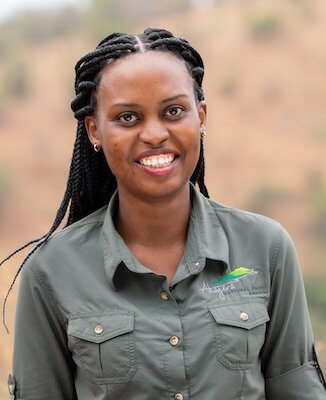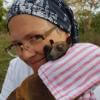Sensors already equip a range of tools to enhance monitoring capacity for conservation. Some of the higher bandwidth technologies, like camera traps and acoustic monitoring systems, have been essential elements of the conservation toolkit for decades, and thus have enough users that we've created dedicated WILDLABS groups to address them. But a whole range of lower bandwidth sensors beyond these core technologies are being increasingly integrated into conservation monitoring systems, and offer rich new insights into the wildlife and ecosystems we're all working to protect. As with many technologies, cost and access have historically been challenges to the adoption of new sensors, but with low-cost and open-source solutions on the rise, we're excited to see what the future of this space holds.
Getting Started with Sensors:
- Watch Shah Selbe's Tech Tutors episode on scaling FieldKit, an open-source conservation sensor toolbox, from a project to a successful conservation tech product.
- Check out our Virtual Meetup about Low-Cost, Open-Source Solutions in conservation tech, including a talk by Alasdair Davies on the Arribada Initiative's work with thermal sensors in early warning systems.
- For a more in-depth introduction, watch the first video in our datalogger mini-series: Freaklabs: How do I get started with Arduino?
In this group, you'll meet others who are using and innovating diverse sensors in their work, discuss ways to make sensors more effective & accessible for conservationists, learn about what sensors are already helping us accomplish in the field, and have the opportunity to ask and answer questions. Join this group to get started!
Header image: Emma Vogel, University of Tromsø
- @RHugtenburg
- | He/They
Student at Aberystwyth University. Bug Fanatic🪲. Worked at Octophin Digital for my industrial year placement 🐙.
- 0 Resources
- 0 Discussions
- 20 Groups
Arm
- 0 Resources
- 4 Discussions
- 3 Groups
- @Robincrocs
- | He/Him//El//Ele
Wildlife biologist, works with Caimans and Crocodiles
- 0 Resources
- 0 Discussions
- 14 Groups
International Union for the Conservation of Nature (IUCN)
Key Biodiversity Areas Programme Officer, IUCN



- 0 Resources
- 89 Discussions
- 8 Groups
- 0 Resources
- 0 Discussions
- 8 Groups
Simeone Consulting
- 0 Resources
- 2 Discussions
- 4 Groups
Wildlife researcher

- 1 Resources
- 12 Discussions
- 5 Groups
La Trobe University
Zoologist & Conservation biologist
- 0 Resources
- 0 Discussions
- 2 Groups
- 0 Resources
- 0 Discussions
- 8 Groups
TechnoSmArt
I am an ornithologist, have been working with GPS tracking of both seabirds and terrestrial birds. I have been involved also in conservation projects in Italy, Chile and Ecuador
- 0 Resources
- 0 Discussions
- 5 Groups
- @magali
- | she/her
Swedish University of Agricultural Sciences
Postdoctoral researcher at Swedish University of Agricultural Sciences
- 0 Resources
- 0 Discussions
- 16 Groups
Tech for Conservation
- 0 Resources
- 2 Discussions
- 13 Groups
The Smithsonian National Zoo & Conservation Biology Institute is seeking a Postdoctoral Research Fellow to help us integrate movement data & camera trap data with global conservation policy.
22 April 2024
In a recent publication we tested Underwater Passive Acoustic Monitoring (UPAM) as a feasible non-invasive technique to study the calling behavior of therathened aquatic Andean frogs under natural conditions in the...
6 April 2024
Article
You’re invited to the WILDLABS Variety Hour, a monthly event that connects you to conservation tech's most exciting projects, research, and ideas. We can't wait to bring you a whole new season of speakers and...
22 March 2024
This funding opportunity is to support projects to enhance existing, high TRL (7-9) marine biogeochemical sensors and integrate with National Marine Equipment Pool’s autonomous underwater platforms. You must be based...
11 March 2024
The IQOE Task Team on Low-Cost Hydrophones for Research, Education, and Citizen Science is looking for industry partners to develop a low-cost hydrophone.
15 December 2023
Funding
With $60,000, $30,000, and $10,000 grants available for 14 outstanding projects, the support of engineering and technology talent from Arm (the leading semiconductor design company), and access to the world’s biggest...
1 December 2023
Article
Read our interview with Clementine Uwamahoro, African Parks’ Country Manager in Conservation Technology overlooking technology operations for both Akagera National Park and Nyungwe National Park.
29 November 2023
The Department of Applied Ocean Physics and Engineering (AOPE) at the Woods Hole Oceanographic Institution (WHOI) seek to hire 1-2 scientists at any of the Assistant/Associate/Senior Scientist levels to develop research...
27 November 2023
TagRanger® is a state-of-the-art wildlife finding, monitoring and tracking solution for research, conservation and environmental professionals. With superior configurability for logging data, reporting location and...
23 November 2023
Yale University & Map of Life Rapid Assessments - XPRIZE
8 November 2023
Yale University & Map of Life Rapid Assessments - XPRIZE
8 November 2023
Yale University & Map of Life Rapid Assessments - XPRIZE
8 November 2023
April 2023
February 2023
| Description | Activity | Replies | Groups | Updated |
|---|---|---|---|---|
| Hi everyone, @craig joined last month's Variety Hour to chat about Tagranger, which you can read more about here. A TagRanger®... |
|
Biologging, Connectivity, Sensors | 1 week 1 day ago | |
| 'Most importantly, we have to make it play a MIDI version of the DoctorWho theme song when you arm the device. That has to be the #1 feature if you ask me!' Seconded! |
+9
|
Acoustics, Biologging, Emerging Tech, Open Source Solutions, Sensors | 1 week 2 days ago | |
| Sounds good. Just sent you a private message. |
|
Climate Change, Conservation Tech Training and Education, Sensors | 1 week 4 days ago | |
| This is so cool @Mauricio_Akmentins - congrats and look forward to seeing your project evolve! |
|
Acoustics, Biologging, Climate Change, Conservation Tech Training and Education, Data management and processing tools, Emerging Tech, Open Source Solutions, Protected Area Management Tools, Sensors, Software and Mobile Apps | 2 weeks 3 days ago | |
| First things first, our team, @jcguerra10, @hefca, and myself, is thrilled to share with immense pride... |
|
Build Your Own Data Logger Community, Data management and processing tools, Sensors | 3 weeks 4 days ago | |
| Hi @Henrikcox I hope you are well. I am not sure if you may remember myself and my colleague from CLS. We had a meeting and met in-person at Earthranger last year. ... |
+15
|
Human-Wildlife Conflict, Sensors | 4 weeks ago | |
| Unless you are planning on making a mesh network between nodes then the total distance spanning the location of all the nodes is important to know, not just the intra node... |
|
Sensors, Protected Area Management Tools | 1 month 3 weeks ago | |
| Hi Danilo. you seem very passionate about this initiative which is a good start.It is an interesting coincidence that I am starting another project for the coral reefs in the... |
|
Acoustics, AI for Conservation, Biologging, Camera Traps, Citizen Science, Climate Change, Community Base, Connectivity, Drones, Emerging Tech, Human-Wildlife Conflict, Open Source Solutions, Sensors, Software and Mobile Apps, Wildlife Crime | 2 months 3 weeks ago | |
| Real nice video. I'll have another look in the weekend in detail. |
+10
|
Acoustics, Community Base, Protected Area Management Tools, Remote Sensing & GIS, Sensors | 2 months 4 weeks ago | |
| Fire detection is a sort of broad idea. Usually people detect the products of fire, and most often this is smoke.Many home fire detectors in the US use a radioactive source... |
|
Community Base, Conservation Tech Training and Education, Data management and processing tools, Ethics of Conservation Tech, Human-Wildlife Conflict, Open Source Solutions, Protected Area Management Tools, Sensors, Wildlife Crime | 3 months ago | |
| Thank you for sharing! Super interesting, as we don't see many underwater stereo cameras! We also use Blue Robotics components in our projects and have found them reliable and... |
|
Sensors, Camera Traps, Marine Conservation | 3 months 3 weeks ago | |
| I am working on a prototype to detect and alert for temic & karbadust. They are used for the poisoning of waterholes in South Africa.... |
|
Sensors | 3 months 4 weeks ago |
OpenEars is a fact!
4 April 2019 3:49pm
camera trap sensor zones - how much is hardware and how much firmware
31 October 2016 2:48pm
1 April 2019 7:51pm
Hi Akiba,
Sure thing. An open source camera trap reference design or SoC that meets commerical specifications is, in my eyes, one of the key missing elements in the world of camera traps due to the complexity of achieving comparable performance as that of a Bushnell / Reconyx. Nobody has cracked it yet, and if you're game, that would offer real value to the camera trapping community. I'd be keen to support a move in this direction.
I supported an experimental programme of work a few years back that multiplexed the SD card, meaning anyone with an existing generic camera trap would use the modified SD and the camera would happily keep the bus, writing data / photos, but the bus would be switched on init so the previous data could be read by a third party radio or device, meaning cheap trail cameras could be modified and used and extended. A flat ribbon cable escaped the enclosure in this instance. I was also going to try and run busybox (think WiFi-SD cards) for wireless transfer but the prob was power as the SD card only received power during writes and the objective was 0 hacks - just a modified SD in a standard camera. Could still go down the firmware route, but it gets heavy supporting various different makes. A reference open design and injection moulded case would be the real answer.
Cheers,
Al
2 April 2019 2:25am
Hi Alasdair.
I think an open source camera trap design is very possible. We've looked into the Sunplus chipsets but it seems very difficult to get a reference design and reference software. The SPCA1x28 series is a low end chipset that is very inexpensive, using an 8-bit 8032 processor and handling all the images in hardware. The low cost is likely why so many trail cam manufacturers use them, but the processor is based on an Intel 8051 instruction set circa 1981 and looks closely guarded by Sunplus. What seems to be happening is that companies are selling vanilla circuit boards with standard features and the trailcam manufacturers are using the standard features available in their trailcams with no modification of firmware. On the (Sun)plus side, having an 8-bit controller with 5MP cams means it's possible to idle at very low power and then turn on and trigger the cams quickly.
We've looked at using an Allwinner chipset which is used in a lot of action cams and dashcams and modifying it into a trailcam. It's possible to run Linux and they support SD card interfaces and various cameras. It's also possible to buy just the chip so it's not tied to a platform like Raspberry Pi. This is useful because it's possible to make minimalist boards with just what's needed and also optimize it for power. An issue is that since it will be running a pretty heavy processor, it will be difficult to power optimize. Rough estimates are that at idle but full clock speed, the chip will consume around 90 mA. The Raspberry Pi Zero idles at around 80 mA for reference. Ideally, it'd be nice to get it around 1 mA.
We've also checked out using an ST32 ARM Cortex M4 chip with a parallel camera interface. These are pretty beefy processors but not Linux class like the Allwinner which is an ARM Cortex A7 class chip. Since the ST32F407 chip can run closer to bare metal (ie: no OS layer in the way), its possible to put it in very low power modes and then have it wake up. One issue though is that it doesn't have an SDRAM interface so it will cost a lot to have enough SRAM to buffer more than one image.
Another possibility we were looking at was to have an FPGA running with custom logic and have it controlled by something like an Arduino or an ARM Cortex M3. There is already ArduinoCAM devices but the FPGA code is not open source. This is also a potentially interesting possibility because it would offer a low power device which could be in sleep mode except for the PIR sensor and quickly ramp up to take pictures.
Whether we go with the Allwinner, Sunplus, ST, FPGA, or some other chip, it will probably be a big undertaking since hardware will need to be developed for the chip and system. The software will probably take the most time since custom drivers will likely need to be written as well as application software to handle the main functionality. I'm currently assuming that it will be a year-long project. But if it takes a year to come up with a design that can be useful in so many applications, it may be a small price to pay.
Let me know if you're interested to discuss it more. I will probably move this part of the thread to a separate thread since I think it's diverged from the OP topic.
Akiba
2 April 2019 3:47am
FYI, the open source camera trap part of this thread has moved here:
Workshop: Building and deploying DIY web-connected field sensors and loggers for field research and teaching
 Royal Geographic Society
Royal Geographic Society
26 March 2019 12:00am
HWC Tech Challenge: Smart Parks field update
 Smart Parks
Smart Parks
25 March 2019 12:00am
WILDLABS Virtual Meetup: Low Cost, Open-Source Solutions
18 March 2019 12:00am
Great introduction to IoT
10 December 2015 5:13pm
14 March 2019 7:25am
The talk is really interesting and I agree that it's important to think about the bigger issues of the world and then use technology as just one of the tools to try and tackle them.
IoT Roots are Actually in Habitat Monitoring
14 March 2019 5:59am
Internet of Elephants
4 January 2016 12:01pm
28 August 2017 10:01pm
Love the name. I am doing work around sensor networks for conservation. You have grown quite the team. I am also leavine the corporate IT world as a software engineer to start a conserve/agri tech start-up. I would like to keep it as a social enterprise as well.
14 March 2019 5:56am
Will your startup be involved in sensor networks for conservation? I'm very interested. Currently we create sensor networks for developmental infrastructure and agriculture and am curious about using it for wildlife monitoring and conservation.
Welcome to the WILDLABS.NET IoT Group!
15 December 2015 7:38pm
21 December 2015 4:57pm
Hi, everyone, I'm John Waugh. I manage the climate and environment program for a small but growing consultancy, Integra LLC, based in Washington DC. Another core area for Integra is information and communications technology for development, hence my interest in the intersection between technology and biodiversity conservation. I'm convinced that there's a bright future for the Internet of Things in the area of conservation, and I look forward to working with you to build a community of practice. It would be very helpful to me to hear your thoughts about what information is most needed. Should we have a directory of experts? Of vendors of hardware and software? Or documentation of existing projects and the technologies being used? I'm sure all of these and more are in demand. I'd like to help get the ball rolling; what should our initial focus be? I'm looking forward to being in touch.
best
John
14 March 2019 5:28am
Hi everyone.
I'm Akiba and I'm an engineer by trade specializing in wireless sensor networks and communications. I generally work with groups like World Bank on technology for development and we are working with UNESCO and other organizations to put on an ICT4D (Information and Communications Technology For Development) conference in Japan later this year.
I've also started and run a communal farm which houses both farmers and techies and as the farm is expanding, we have found that we've been given a forest and part of a mountain to manage along with all its inhabitants. We are planning animal surveys and will also be studying very hard on forestry management. Wildlife conservation has been an interest of mine for a while and I'm looking forward to working and collaborating with people on WildLabs in that realm.
Akiba
Update on Arribada's Low Cost Open Source Sea Turtle Tag
 Rachael Kemp
Rachael Kemp
12 March 2019 12:00am
#Tech4Wildlife Photo Challenge: Our Favourites from 2019
3 March 2019 12:00am
Arribada Initiative Update: Testing our prototype thermal cameras with elephants in India
 Arribada Initative
Arribada Initative
1 March 2019 12:00am
Bioacoustics for Ecologists: Hardware, Survey Design and Data Analysis
 PR Statistics
PR Statistics
25 February 2019 12:00am
expanding the range of temperature pittags
13 February 2019 12:31pm
ESP32 capacitive sensing with birds
24 January 2019 2:01am
7 February 2019 2:40pm
Hi Ted,
I don't have experience with that chip either but this sounds like an interesting idea. But zooming out a bit, may I ask what PIT reader are you using?
Thanks,
-harold
7 February 2019 5:21pm
Hi Harold
The existing boarsds use an EM4095 chip. The boards are a 2010 design, done by our department of conservation.
I was thinking of canibilising the old boards - to save costs.
Ted
8 February 2019 5:07am
Hi Ted,
This is all very interesting. The solution you describe seems eminently doable and in fact quite cheap. So doable and cheap that it may behoove one to also ask what the higher level vision is, in order to further constrain the solution.
For instance is there a wider need for this kind of monitoring (e.g. other birds or animals, other localities); or perhaps a need to generate greater outreach or involve new volunteers.
Thanks,
-harold
OpenCollar for wildlife monitoring launches at The Things Conference
 Smart Parks
Smart Parks
6 February 2019 12:00am
FLIR and World Wildlife Fund Announce Effort to Combat Rhino Poaching in Kenya
 FLIR Systems, Inc.
FLIR Systems, Inc.
18 January 2019 12:00am
The Ecosulis Rewilding Tech Challenge
 Ecosulis
Ecosulis
14 January 2019 12:00am
HWC Tech Challenge Update: Testing our prototype thermal cameras in the Arctic
 Arribada Initative
Arribada Initative
9 January 2019 12:00am
31 March 2023 1:24pm
can we detect gillnets in turbid water?
27 November 2018 4:12pm
4 December 2018 2:55am
Hi Aurelie,
I do some work in underwater robotics and it's a tough problem! Maybe there is a way around the problem instead of through. May I ask, is the goal specifically to map where the nets are within a certain stretch of river, or to be able to ensure there are no nets wihin the area, or...?
Thanks,
-harold
4 December 2018 9:01am
Yes, I agree it's a tough problem - i'm certainly stumped ;)
but thanks so much for your reply and counter question - the goal is to find these gillnets and remove them...and we don't want to be pulling up every net and buoy...
Monitoring Ecosystems through Sound: The Present and Future of Passive Acoustics
 Ella Browning
Ella Browning
4 December 2018 12:00am
WILDLABS Virtual Meetup: Big Data in Conservation
27 November 2018 12:00am
Camera traps designed for animals are now invading human privacy
 Rogelio Luque-Lora
Rogelio Luque-Lora
22 November 2018 12:00am
Southern right whale superpod blows a hole in the record books
 Tim Knight
Tim Knight
22 November 2018 12:00am
A technologist's journey to protect wildlife: The reality and potential of conservation technology (recorded talk)
 Ted Schmitt
Ted Schmitt
22 November 2018 12:00am
WILDLABS Virtual Meetup: Networked Sensors for Security and HWC Prevention
12 November 2018 12:00am
WILDLABS Virtual Meetup Recording: Next Generation Wildlife Tracking
12 November 2018 12:00am
Tusk Conservation Lecture 2018: Ted Schmitt
 Tusk
Tusk
15 October 2018 12:00am
Underwater Robot Trained to Kill Coral-Destroying Reef Starfish
 The Maritime Executive
The Maritime Executive
18 September 2018 12:00am
Next Generation Animal Tracking Ideation Challenge
 NASA Tournament Lab
NASA Tournament Lab
14 September 2018 12:00am















































6 April 2019 4:22pm
FYI: we included instructions in English: https://github.com/SensingClues/OpenEars